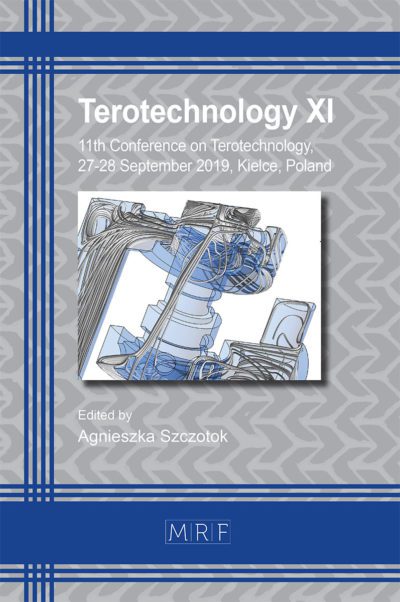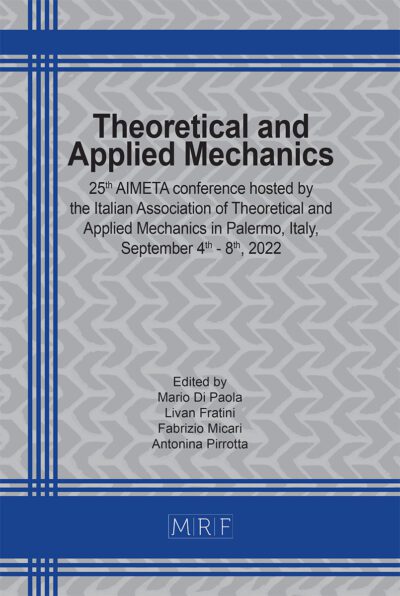Experimental investigation about abrasion wear of microtools through direct and indirect measurements.
Alessandro Metelli, Andrea Abeni, Aldo Attanasio
Abstract. In the industrial context, tool wear has a strong impact on productivity, manufacturing costs, surface integrity and surface roughness. The most common approach on tool wear monitoring requires the estimation of the tool life by performing specific tests according to ISO international standards. A huge number of tests must be performed due to the strong correlation between tool life and process parameters, i.e. cutting speed, feed rate, depth of cut, lubrication. In micro-machining, the size downscaling related issues reduces the tool life. Furthermore, the direct measurement of tool wear requires more accurate instruments at higher magnification than conventional size machining; the tool wear standards do not cover the specific case of micro-machining, so no references exist about, for example, the limit of the width of the flank wear land. The cost in terms of money and time of the wear tests frequently resulted in an un-optimized approach, with a more frequent than necessary substitution of the tools. The development of systems of indirect measurement to monitor tool wear in high-speed micro-machining appears a valuable objective. In this work, an experimental setup was designed by constraining a sheet workpiece on a triaxial piezoelectric loadcell to record the force signals during the machining. The material of the workpiece is CuNi18Zn20, a lead-free hard-to-cut material employed to manufacture micro-products in several industrial sectors, such as jewelry, horology, electronics and biomedical. A flat-end micro-mill with a nominal diameter of 0.8 mm was utilized to machine the upper surface. The machining was periodically interrupted to check the wear on the tool by measuring some geometrical features with a 3D multifocal optical microscope. Moreover, the surface integrity of the machined workpiece was investigated by measuring its roughness. The three force components were elaborated to compute some parameters to research their correlation with the tool wear. The experimental setup was successfully tested, and it can be employed to perform new machining with different materials, tools and process parameters. The procedure allows to monitor online the effects of the wear on the tool on the machining. The data analysis allowed to define a correlation between the force components and the tool wear and a correlation between surface finishing and tool wear.
Keywords
Tool Wear, Micromachining, Cutting Force, Lead-Free Brass, Surface Integrity, Milling
Published online 5/7/2025, 9 pages
Copyright © 2025 by the author(s)
Published under license by Materials Research Forum LLC., Millersville PA, USA
Citation: Alessandro Metelli, Andrea Abeni, Aldo Attanasio, Experimental investigation about abrasion wear of microtools through direct and indirect measurements., Materials Research Proceedings, Vol. 54, pp 1694-1702, 2025
DOI: https://doi.org/10.21741/9781644903599-182
The article was published as article 182 of the book Material Forming
![]() Content from this work may be used under the terms of the Creative Commons Attribution 3.0 license. Any further distribution of this work must maintain attribution to the author(s) and the title of the work, journal citation and DOI.
Content from this work may be used under the terms of the Creative Commons Attribution 3.0 license. Any further distribution of this work must maintain attribution to the author(s) and the title of the work, journal citation and DOI.
References
[1] L.L. Alhadeff, M.B. Marshall, D.T. Curtis, T. Slatter, Protocol for tool wear measurement in micro-milling, Wear 420 (2019) 54-67. https://doi.org/10.1016/j.wear.2018.11.018
[2] Mohammad Malekian, Simon S. Park, Martin B.G. Jun. (2009) “Tool wear monitoring of micro-milling operations.” https://doi.org/10.1016/j.jmatprotec.2009.01.013
[3] Corne, Rafael, Nath, Chandra, El Mansori, Mohamed, and Kurfess, Thomas. (2017) “Study of spindle power data with neural network for predicting real-time tool wear/breakage during inconel drilling.” Journal of Manufacturing Systems 43:287–295. https://doi.org/10.1016/j.jmsy.2017.01.004
[4] Klocke, Fritz, Dobbeler, Benjamin, Pullen, Thomas, and Bergs, Thomas. (2019) “Acoustic emission signal source separation for a flank wear estimation of drilling tools.” Procedia CIRP 79:57-62. https://doi.org/10.1016/j.procir.2019.02.011
[5] Wang, Jinjian, Xie, Junyao, Zhao, Rui, Zhang, Laibin, and Duan, Lixiang. (2017) “Multisensory fusion based virtual tool wear sensing for ubiquitous manufacturing.” Robotics and Computer-Integrated Manufacturing 45:47–58. https://doi.org/10.1016/j.rcim.2016.05.010
[6] Oberlè, Robin, Schorr, Sebastian, Yi, Li, Glatt, Moritz, Bahre, Dirk, Jan, C., and Aurich. (2020) “A use case implement Machine Learning for Life Time Prediction of Manufacturing Tools.” Procedia Cirp 93:1484-1489. https://doi.org/10.1016/j.procir.2020.04.056
[7] Galipothu Dheeraj, Simon, and Deivanathan, R.. (2019) “Early detection of drilling tool wear by vibration data acquisition and classification.” Manufacturing Letters 21:60–65. https://doi.org/10.1016/j.mfglet.2019.08.006
[8] A. Colpani, A. Fiorentino, E. Ceretti, A. Attanasio, Tool wear analysis in micromilling of titanium alloy, Precision Engineering 57 (2019) 83-94. https://doi.org/10.1016/j.precisioneng.2019.03.011
[9] Ravikumar, S., and Ramachandrana, K.I.. (2018) “Tool Wear Monitoring of Multipoint Cutting Tool using Sound Signal Features Signals with Machine Learning Techniques.” Materials Today: Proceedings 5:25720–25729. https://doi.org/10.1016/j.matpr.2018.11.014
[10] Abeni, Andrea, Cappellini, Cristian, and Attanasio, Aldo. (2021) “Finite element simulation of tool wear in machining of nickel-chromium based superalloy” ESAFORM 2021. 24th International Conference on Material Forming, Liège, Belgique. https://doi.org/10.25518/esaform21.4302














